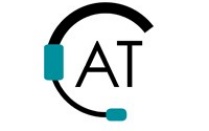Full citation
Li, T. & Calantone, R. J. (1998). The Impact of Market Knowledge Competence on New Product Advantage: Conceptualization and Empirical Examination. Journal of Marketing, 62(4), 13-29.
Format: Peer-reviewed article
Type: Research — Non-experimental
Experience level of reader: Advanced
Annotation: The purpose of this study was to define the concept of market knowledge competence as the process of producing and combining information about the market in a systematic way. It organizes the concept into three components, customer knowledge process, competitor knowledge process and marketing-research and development interactions.
Setting(s) to which the reported activities/findings are relevant: Large business, Small business (less than 500 employees)
Knowledge user(s) to whom the piece of literature may be relevant: Manufacturers, Researchers
Knowledge user level addressed by the literature: Organization
This article uses the Commercial Devices and Services version of the NtK Model
Primary Findings
Method: Concentrate on obtaining, interpreting and integrating customer information and the new product advantage will be stronger.
Survey. A positive relationship between a customer knowledge process and new product advantage was found to be significant at the .01 level
Occurrence of finding within the model: Step 4.11
Tip: Maintain a strong Research & Development department and the new product advantage will likely be greater.
Survey. Positive correlation between the strength of R&D and new product advantage (p<= .01)
Occurrence of finding within the model: Stage 3, Stage 4
Secondary Findings
Method: Marketing-R&D interface theory suggests that without the interface between these two functions, marketing knowledge would be underused, potentially resulting in unsuccessful products. (Griffin & Hauser [1992]; Gupta, Raj, & Wilemon [1986]; Song & Dyer [1995]; Song & Parry [1997])
Occurrence of finding within the model: Step 4.12, Step 4.11, Step 6.3, Step 6.1, Step 5.3
Tips:
- The greater the customer demand, the greater the need for integration of marketing knowledge and R&D knowledge in order to fill the gap between customer requirements and product offerings. (Gupta, Raj & Wilemon [1986])
Occurrence of finding within the model: Step 4.12, Step 4.11, Step 6.3, Step 6.1, Step 5.3
- Companies must interact with customers when technology is experiencing rapid change. (Day & Wensley [1988])
Occurrence of finding within the model: Step 4.12, Step 4.11, Step 6.3, Step 6.1, Step 5.3
- Top managers should place a strong emphasis on obtaining market information to ensure adequate generation of market intelligence about competitors and customers. (Jaworski & Kohli [1993])
Occurrence of finding within the model: Stage 2
